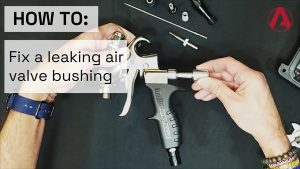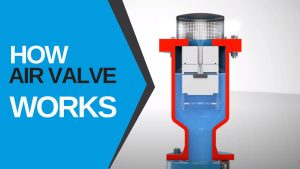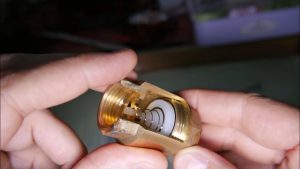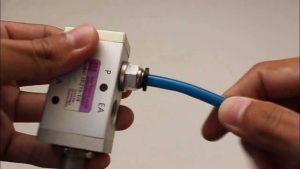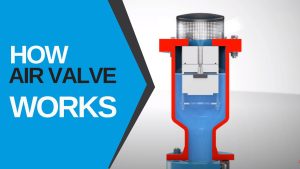What is a Blow Down Valve?
Blow down valve is usually used in boilers to discharge dissolved solids from boiler water. These valves are mounted on the boiler drain. Depending on the design and use of the boiler, one or more blowdown valves may be used in the boiler.
Boiler blowdown uses water intentionally wasted from the boiler to avoid the concentration of impurities as the steam continues to evaporate. Water is forced to be blown out of the boiler under certain steam pressure.
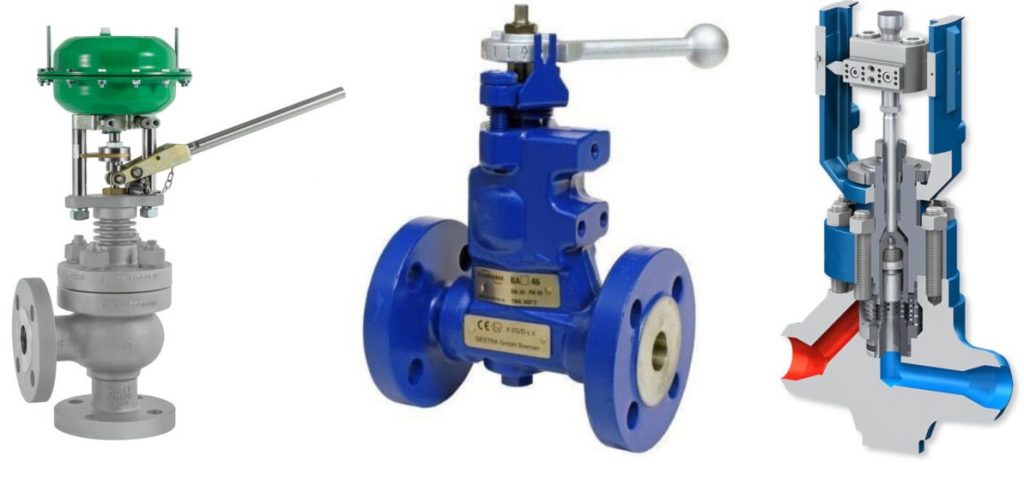
Operation of Blowdown Valve
Normally they are attached with the equipment in process whose working fluid is water. When water have solid impurities and some water is continuously evaporated with some mechanism like vaporization in boilers or drafting in cooling towers then it increase the accumulation of solid impurities in the water left after the evaporation. If the solid impurities accumulation increases a lot then they start depositing at the surface of equipment and they results into the blockage of the path of liquid flow and then the processes in which heat transfer is required of the operation may face difficulties in their operation.
In case of boiler operations, impurities precipitation is highest at the location where water is converted in the steam. Thus the scale formed will act as insulating layer which deviate the flow of heat through equipment. When the scaling thickness increases the rate at which steam is being generated is reduces because the rate at which heat is flowing is reducing. Metal surface may also get damaged due to temperature increase if the metal surface due to the heat accumulation.
Why use Blowdown valves?
The steam boiler evaporates liquid water to form steam or gaseous water. And need according to the boiler application request frequent supplement boiler feed water, in order to continuously produce steam.
Water is a powerful solvent that will dissolve small amounts of solids in pipes and vessels, including boilers. The continuous evaporation of the steam concentrates the dissolved impurities until they reach a level that may damage the steam production in the boiler.
Without blowdown, impurities will reach saturation levels and begin to settle in the boiler. The concentration of impurities is highest near the heat exchange surface where steam is produced. Precipitation is expected to occur on those heat exchange surfaces in the form of scale deposits. Scale-forming deposits insulate the heat exchange surface, initially reducing the rate of steam generation and potentially causing boiler metals to reach fault temperatures.
A small amount of water is continuously discharged from the boiler by surface blowdown to remove impurities dissolved in the boiler. The most effective method is to remove the water with the highest content of impurities, which can be found where the steam is separated from the steam drum at the top of the boiler.
Applications of Blowdown valves
Blowdown valves are widely used in:
- Vessels and equipment to prevent their contribution during explosive or fire incidents.
- Compressor systems to relieve trapped pressure during shut down.
- Industrial boilers, Heat exchangers, and Cooling Towers control the dissolved and suspended solids level in the water.
- In pipes to remove unwanted materials.
Procedures used in blowdown valve
- close steam and water supply valves, then open drain valves.
- open the upper steam valve for a few seconds, then close it to allow access to the steam side.
- open the lower water valve for a few seconds, then close it and blow from the waterside. Now close the drain valve.
- open the water valve, then open the steam valve.
- close steam and water supply valves, then open drain valves.
- open the upper steam valve for a few seconds, then close it to allow access to the steam side.
- open the lower water valve for a few seconds, then close it and blow from the waterside. Now close the drain valve.
- open the water valve, then open the steam valve.
Blow-down valve type
Surface Blowdown Valve
Surface blowdown is usually fed into flash tanks and heat exchangers for heat recovery. Flash steam can be used in feed heaters.
Surface blowdown provides other advantages of steady-state operating conditions. Some boiler water treatments result in the precipitation of impurities because insoluble particles are expected to settle to the bottom of the boiler before being entrapped into the water circulating through the heat exchange surface. These water treatments usually involve the formation of sludge compounds to trap these particles, and the boiler intended for this water treatment includes a structure called a mud bucket at the bottom of the boiler.
They are used when solid impurities precipitation is are relatively slower. The simplest design of the surface blow down valve is that pipe near surface of water level inserted and the water through the valve is permitted to flow out. It let the equipment to operate continuously with steady state condition. When they are used in boilers then water flow out are sent to the flash tank in which they are flashed and flashed steam then heat up feed water.
For more efficient design a swivel joint is used and then short length pipe are suspended on float. With the help of this mechanism, it can collect the oil which is floating at the surface of water because if oil was not removed then it results in foaming inside boiler. Surface blow down generally fed heat exchanger and flash tank for the recovery of heat. These valves continuously flow off small volume of water from boiler in order to get rid of the dissolved impurities present. They are very effective in order to remove the water in which the concentration of impurities is higher and the water in which impurities are very high are found where the steam separated in the boiler.
Bottom Blowdown Valve
The simpler is the pipe that enters the steam drum at a normal water level, while the more complex arrangement is to connect the swivel joint to the pipe so that the length of the pipe suspended by the float is shorter. Skimmers may be more effective at removing the oil slick, which would otherwise cause foam.
The bottom blowdown involves periodically opening a valve in the mud barrel to allow boiler pressure to drain accumulated sludge from the boiler. A similar drain joint at the bottom of the water wall header reduces the frequency of blowdown. Several short blow-outs removed the sludge more efficiently than a single continuous blow-off. Shorter blowdown events will result in little variation in boiler water levels and are safer during periods of high steam demand. The bottom blowdown line drains the lowest part of the boiler, so it can be used for maintenance of the discharge boiler.
The diameter of the bottom drain pipe must be large enough to minimize the risk of the baked sludge clogging. Modern boilers discharge bottom blowdown into the blowdown tank, which can flash and discharge steam upward without carrying water that could cause combustion. A pipeline near the bottom of the sump keeps the water level below the sump entry point and allows cooler water remaining from an earlier sump event to be drained from the sump first.
How do blowdown valves minimize corrosion?
- Two bottom drain valves are usually used in series. One valve is used as a sealing valve and the other as a blowdown valve. The sealing valve is usually opened first and closed last. Both fully open quickly to minimize corrosion on seat and disc surfaces.
- Ff there is resistance when trying to close the valve, reopen the valve to flush out particles so as not to clip scale or rust particles into the valve.
- Whenever the boiler is shut down for maintenance, the bottom drain valve is usually rebuilt or replaced.
Advantages
- Easy to maintain online
- Minimal maintenance downtime
- Provide automatic or manual options
- Reduce lifetime pollution costs
- Increased productivity
- No special tools required
- Suitable for all steam boilers.
Related Tags :
Ten articles before and after
News Events,Zeco Fluid Technology Co., Ltd.,Zeco valve Co.,Ltd.
Sealing Elements of Cryogenic Ball Valves (Part 1)
Sealing Elements of Cryogenic Ball Valves (Part 2)
Ball Valve Usage and Installation
News Events,VALVE WORLD EXPO ASIA INVITATION,Zeco valve Co.,Ltd.
Manufacture and Installation Requirements for Cryogenic Valves






